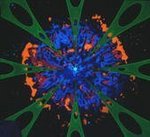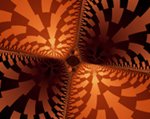| Author
|
frequencies and keys, and interpretation of certain filters on an eq?
|
orbit
IsraTrance Full Member

Started Topics :
71
Posts :
108
Posted : Aug 9, 2004 04:45
|
Ahoy!
Could anyone please give me a rundown on what frequencies are the keys on an octave hitting e.g. C1=? G2=? etc etc. Also, i need a way of understanding what does the filters on an eq actually do? called the q parameter on cubase.(low shelving, high-pass, high shelving and low-pass filters). Muchly appreciated if anyone could inform me on these matters.
cheers,
love and light.
        .:TO INFINITY AND BEYOND:. .:TO INFINITY AND BEYOND:. |

|
|
fuzzikitten
Annunaki

Started Topics :
40
Posts :
603
Posted : Aug 9, 2004 06:17
|
Hi orbit!
For frequencies of notes, I keep a printout of http://www.phy.mtu.edu/~suits/notefreqs.html handy.
As far as filters, EQ, and Q, I'll try to give a brief rundown.
A filter simply cuts off the volume of frequencies above or below a certain frequency. A low-pass filter reduces the volume of frequencies above a certain point, whereas a high-pass filter reduces frequencies below a certain point. The particular point is the filter setting.
EQ, or equalization, is somewhat like a filter except you can pin-point particular frequency ranges to cut/boost. In Cubase, a look at the EQ portion of the channel settings window shows four EQ points that allow you to boost/cut a sound at four different points.
The Q setting determines how broad or narrow the EQ boost/gain is. A low Q setting refers to a broad boost/gain, with the target frequency being boost/cut the most and sloping gently away. A high Q setting gives a precise cut/boost, minimizing the adjacent frequencies that are affected.
As far as the 'filters on an eq', I'm not sure what you mean as I've always understood them as seperate things (similar, but seperate). If you are referring to setting the Q of EQ 1 to extreme min or max, or the Q of EQ 4 the same, in cubase, then this setting the Q to one of these settings will turn that EQ point into a low shelving, highpass, etc filter. Visually it should make sense what each does, but if not there are tons of tutorials that go in to more detail on what each of those filter types are.
I don't know if I've said this as clearly as I intended (it's late), so if anyone sees a point to correct/elaborate, please do so!
Hope that helps,
-Alex |

|
|
Input
IsraTrance Junior Member

Started Topics :
24
Posts :
456
Posted : Aug 9, 2004 08:20
|
|
WAVELOGIX
Wavelogix

Started Topics :
136
Posts :
1214
Posted : Aug 9, 2004 11:13
|
|
but y would u possibly need this ??? pls explain in a bit detail .... i do all of it by EAR |

|
|
Sektor666
Inactive User

Started Topics :
9
Posts :
439
Posted : Aug 9, 2004 11:23
|
Can you fit guitar strings by ear Global , if you can so you can do all by ear you have 60-70% musical hearing . If you play on strings aka violin or it's family so you have 100% musical hearing and you can do whatever you want you just hear it .
if you don't use what Yuli wrote sometimes it would help you .
Sitar not counts , joke . |

|
|
ZilDoggo

Started Topics :
4
Posts :
663
Posted : Aug 9, 2004 14:31
|
GTN,
you could use it to tune your track to the tempo.,.,
you could also use it to accent certain harmonics.,
but please dont use this list to tune a guitar!!!
(unless you want to do it wrong on purpose)

greets.,
aka.,
|

|
|
WAVELOGIX
Wavelogix

Started Topics :
136
Posts :
1214
Posted : Aug 9, 2004 23:53
|
sektor 666 ,
i can definately tune a guitar all by the ear .... 10 yrs of music training man ... i think my ear is really developed ... !
and btw ... did not have an idea ...abt the way this chart is used ...
thanks neways !
|

|
|
Sektor666
Inactive User

Started Topics :
9
Posts :
439
Posted : Aug 10, 2004 02:47
|
I can tune guitar too , but still i advice you to use .
Chart is very simple , each tone is equal to eq region .
for example : tone A diez(great big octave or C1) is 58hz at EQ , so if you remove the 58hz region with mid-high Q settings you will probably get rid of this tone .
I'm not sure that everyone have perfect musical hearing and can do it alone even if they musical educated .
We talking about harmonics enchange or remuval so i will advice also to flatten the sound by this way :
why to flatten it , because when it's flat you get much more of it or more fat as some use this word here .
At every sample there are high volumed frequencies and low vol. freq.
The high vol. freq. sometimes do produce distortion , reduce them by that way .....
Take mid Q point , then just move it from 0hz till 22khz on highest dB , then find highest peak (when EQ will show highest volume it is highest peak) reduce it and do the same thing couple of times .
I do this , maybe someone will find it useful. |

|
|
micromusic

Started Topics :
2
Posts :
65
Posted : Aug 10, 2004 05:51
|
hey zildoggo,
how do you tune your track to the tempo? |

|
|
br0d
IsraTrance Junior Member

Started Topics :
12
Posts :
355
Posted : Aug 10, 2004 09:34
|
Quote:
|
On 2004-08-09 11:13, Global Trance Network wrote:
but y would u possibly need this ??? pls explain in a bit detail .... i do all of it by EAR
|
|
because anyone who's serious uses whatever tools, tips, and tricks they stumble across, regardless of how uncool or unmystical.
|

|
|
ZilDoggo

Started Topics :
4
Posts :
663
Posted : Aug 10, 2004 14:40
|
micromusic,
first of all you need to get an idea of how tempo translates to frequency.,
they are basically the same thing but one is expressed in beats/minute (tempo) and the other in periods/second (Hz).,
to go from minutes to seconds you need to divide by 60.,
so, a tempo of 120bpm is (120/60 = ) 2 beats/second = 2hz
145bpm = (145/60) 2.416hz.
for the tuning it doesnt matter so much what octave you calculate it for., any octave will be in tune with the tempo.,
so, first you think of a tempo you'd like to be close to,
lets take the 145bpm example.,
then you calculate the frequency (see above).,
2.416hz. (leave it as precise as possible in your calculator)
then you start to multiply by 2
2.4166..
x 2
4.833..
x 2
9.66..
x2
..etc.,
untill you get into the range of the list above., (in this case somewhere between 55 and 104 hz.
i end up with 77.33 hz.,
now compare this number to the closest number in the list.,
if i use the list fuzzikitten linked to i get D# @ 77.78hz.,
this is very close already (so 145bpm is a nice tempo already) but we can get closer.,
because we now know the note that we will use we can calculate back to a tempo.,
so take 77.78hz and this time divide it down by 2
77.78
/2
38.89
/2
19.445
/2
9.7225
/2
4.86125
/2
2.430625
aah, now we are close to where we started.,
so now we just have to multiply it by 60 to make this into bpm
2.430625 * 60 = 145.8375 bpm!.,
so now you have both a tempo (145.8375 BPM) and a musical note ( D# ) that are fundamentaly harmonic.!!

greets,
aka.,
|

|
|
fuzzikitten
Annunaki

Started Topics :
40
Posts :
603
Posted : Aug 10, 2004 15:19
|
Quote:
|
On 2004-08-10 14:40, ZilDoggo wrote:
so now you have both a tempo (145.8375 BPM) and a musical note ( D# ) that are fundamentaly harmonic.!!
|
|
I never ever thought of that - nice!
Now I can stop treating my tempo like an arbitrary value (hey, let's make EVERY song 140bpm) and can start 'tuning' it with my track.
Thanks man!
-Alex |

|
|
PsYmAnTiCs=]

Started Topics :
8
Posts :
88
Posted : Aug 10, 2004 15:41
|
When I think of all the potential track tempos (once we start getting into fractions of a beat or single hZ cycles) I get a mental image of DJ's, the world over, crying into their headphones 'cos they can't beat match anymore!! Will this be the death of the DJ? 
I've found a handy utility which calculates the root note in hZ, along with lot's of other goodies.

http://www.analogx.com/contents/download/audio/freq.htm |

|
|
ZilDoggo

Started Topics :
4
Posts :
663
Posted : Aug 10, 2004 16:42
|
" 'cos they can't beat match anymore!! "
maybe then they will wake up and learn to mix with their ears instead of their beat-counters 
nice proggie btw!.,
greets.,
aka., |

|
|
billy ambulance
IsraTrance Junior Member

Started Topics :
43
Posts :
560
Posted : Aug 10, 2004 16:53
|
|
I don`t see the connection between tempo and the note (scale) of the track. I read the calculation but it seems to me like some kind of bizzare way of thinking.. |

|
|